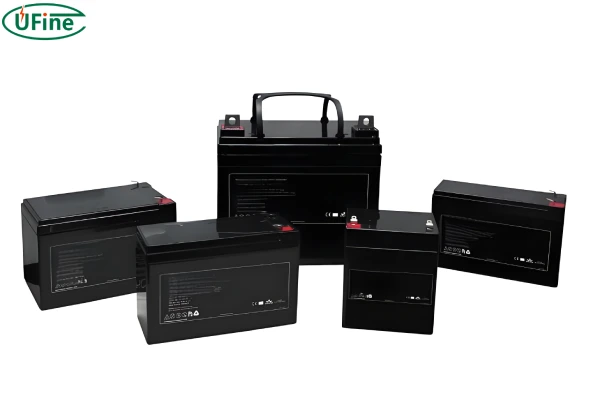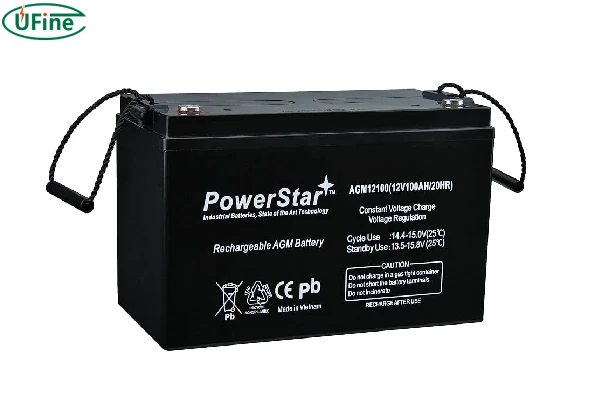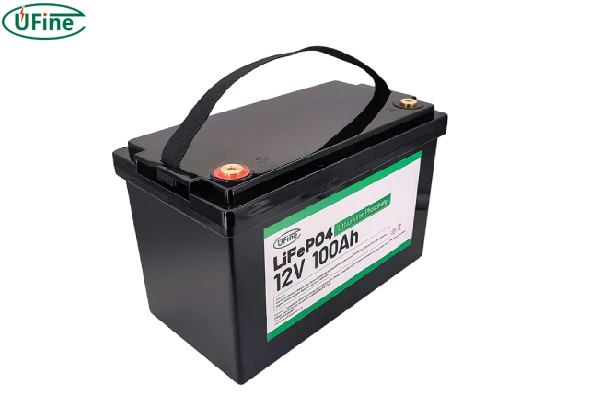Group 27 batteries are a popular choice for various applications due to their reliability and capacity. In this article, we’ll delve into what Group 27 batteries are, the different types available, key parameters to consider, how to charge them, and maintenance tips to ensure longevity.
Part 1. What is a Group 27 battery?

Group 27 batteries are a specific size classification of batteries that are widely used in marine, RV, and backup power applications. They are known for their robust capacity and ability to provide consistent power over extended periods. These batteries are versatile and can be used in various settings, making them a popular choice for both commercial and recreational use.
Group 27 batteries typically measure around 12.1 inches in length, 6.8 inches in width, and 8.9 inches in height. This standardized size allows them to fit into various battery compartments and enclosures, making them a convenient option for many applications.
Why “Group 27”?
The “Group 27” designation for a battery refers to a standardized battery size as defined by the Battery Council International (BCI). This group size classification helps consumers and manufacturers identify batteries with specific dimensions and characteristics to ensure compatibility with various applications.
Here’s a breakdown of what the Group 27 designation means:
Group Size Explanation
The BCI has created a set of standards for automotive and industrial batteries, where each group size corresponds to specific dimensions and characteristics.
These standards help ensure that batteries will fit properly in the battery compartment of vehicles and other equipment.
Physical Dimensions:
Group 27 batteries have specific dimensions: approximately 12.1 inches (306 mm) in length, 6.8 inches (173 mm) in width, and 8.9 inches (226 mm) in height.
While the exact dimensions can vary slightly between manufacturers, they adhere closely to these standards to maintain compatibility.
So, the “Group 27” designation is a standardized size classification that provides a reference for the physical dimensions and typical applications of the battery. This Standardization ensures that consumers and manufacturers can easily identify and replace batteries across different devices and vehicles.
Part 2. Group 27 battery types
Group 27 batteries come in several types, each with unique characteristics and benefits. Understanding these differences can help you choose the best battery for your needs.
1. Group 27 Flooded Lead-Acid Batteries

Flooded lead-acid batteries are the most traditional type of Group 27 battery. They contain liquid electrolytes and require regular maintenance, such as checking and topping off the water levels. These batteries are robust and cost-effective, making them suitable for high-demand applications. However, they must be kept upright to prevent spills and leaks.
2. Group 27 Sealed Lead-Acid (SLA) Batteries
Sealed Lead-Acid batteries, including Absorbent Glass Mat (AGM) and Gel batteries, are maintenance-free and can be installed in any position. AGM batteries use a fiberglass mat to absorb the electrolyte, making them spill-proof and more resistant to vibrations. Gel batteries use a silica gel to immobilize the electrolyte, providing deep discharge capabilities and a longer lifespan. These batteries are safer and require less maintenance than flooded lead-acid batteries.
3. Group 27 Lithium-Ion Batteries
Lithium-Ion batteries are the most advanced type of Group 27 battery. They offer high energy density, are lightweight, and have a long lifespan. Lithium-Ion batteries require no maintenance and have a high discharge rate, making them ideal for applications where weight and efficiency are crucial. They are also more environmentally friendly, not containing harmful lead or acid.
Part 3. Group 27 battery parameters
When choosing a Group 27 battery, consider the following parameters to ensure you select the right battery for your application:
1. Dimensions
Group 27 batteries typically measure approximately 12.1 inches in length, 6.8 inches in width, and 8.9 inches in height. This standardized size allows them to fit into various battery compartments and enclosures, making them a versatile option for many applications.
2. Weight
The weight of Group 27 batteries can vary depending on the type. Flooded lead-acid batteries are the heaviest, usually weighing between 50 to 60 pounds. AGM and Gel batteries are slightly lighter, typically weighing around 45 to 55 pounds. Lithium-Ion batteries are the lightest, often weighing between 25 to 30 pounds. The lighter weight of Lithium-Ion batteries makes them easier to handle and install, especially in applications where weight is a critical factor.
3. Voltage
Most Group 27 batteries operate at a standard voltage of 12 volts. This voltage is suitable for powering a wide range of devices and systems, from marine electronics to RV appliances. The consistent voltage output ensures reliable performance in various applications.
4. Capacity
Capacity is measured in ampere-hours (Ah) and indicates how much energy the battery can store. Group 27 batteries typically have a capacity ranging from 85Ah to 105Ah. Higher capacity batteries provide longer run times, which is essential for applications requiring extended use. For instance, a higher capacity battery would be beneficial for powering an RV’s electrical system overnight or running a boat’s trolling motor for extended periods.
5. Price
The price of Group 27 batteries varies based on the type and brand. Flooded lead-acid batteries are generally the most affordable, making them an attractive option for budget-conscious buyers. AGM and Gel batteries are more expensive due to their advanced technology and maintenance-free design. Lithium-Ion batteries are the most expensive but offer the best performance and longest lifespan, providing better long-term value.
Part 4. How to charge group 27 battery?
Properly charging your Group 27 battery is crucial to maintaining its performance and longevity. Here are the steps to charge a Group 27 battery:
- Choose the Right Charger: Ensure you use a charger compatible with your battery type. AGM and Gel batteries require a different charging profile than flooded lead-acid batteries. Lithium-Ion batteries need a smart charger with a built-in battery management system (BMS) to ensure safe and efficient charging.
- Connect the Charger: Attach the charger clamps to the battery terminals, with the red clamp connecting to the positive (+) terminal and the black clamp to the negative (-) terminal. Make sure the connections are secure and clean.
- Set the Charger: Select the appropriate charging mode for your battery type. For example, AGM and Gel batteries might require a slower charging rate compared to flooded batteries. Refer to the battery manufacturer’s instructions for the recommended charging settings.
- Monitor the Charging Process: Keep an eye on the charging progress. Avoid overcharging, as it can damage the battery. Smart chargers often have indicators or automatic shut-off features to prevent overcharging. If using a manual charger, monitor the battery voltage and disconnect the charger when the battery is fully charged.
- Disconnect the Charger: Once the battery is fully charged, disconnect the charger. Ensure the battery is ready for use by checking the voltage and charge level. A fully charged 12-volt battery should read around 12.6 to 12.8 volts.
Part 5. Group 27 battery maintenance tips
Proper maintenance can extend the lifespan of your Group 27 battery and ensure reliable performance. Here are some tips:
- Regular Inspection: Check the battery for any signs of damage, such as cracks, leaks, or corrosion on the terminals. Inspect the battery case for swelling or bulging, which can indicate internal damage.
- Clean Terminals: Keep the battery terminals clean and free from corrosion. Use a mixture of baking soda and water to clean any buildup. Apply a thin layer of petroleum jelly, or terminal protector spray to prevent future corrosion.
- Check Electrolyte Levels: For flooded lead-acid batteries, regularly check and top off the electrolyte levels with distilled water. Ensure the water level is above the plates but below the vent well. Do not overfill, as this can cause the electrolyte to overflow during charging.
- Avoid Deep Discharges: Try not to discharge the battery below 50% for AGM and Gel batteries and below 20% for Lithium-Ion batteries to maintain longevity. Deep discharges can significantly reduce the battery’s lifespan.
- Store Properly: Store the battery in a cool, dry place when not in use. Avoid exposure to extreme temperatures, as excessive heat can accelerate self-discharge, and cold can reduce the battery’s capacity.
- Keep Charged: Regularly charge the battery to prevent it from staying in a discharged state for too long. For lead-acid batteries, this helps prevent sulfation, which can damage the battery plates. For Lithium-Ion batteries, maintaining a charge level between 20% and 80% can prolong battery life.
Related Tags:
More Articles

Standard 24 Group Battery Dimensions Explained
What is 24 Group battery standard dimension? Find out now and choose the right battery for your needs. Don’t wait—get informed!
How Cobalt Free Batteries Are Transforming the Electric Vehicle Market?
Cobalt-free batteries are transforming the electric vehicle market with a sustainable choice. This article explores their benefits, challenges, and potential.
Lithium Manganese Batteries: A Comprehensive Guide
Lithium manganese batteries are transforming energy storage. This guide covers their mechanisms, advantages, applications, and limitations.
12 Volt 100Ah Lithium Battery: 12 Important Facts
Want to know about 12 Volt 100Ah lithium batteries? Explore essential facts that reveal their advantages and uses. Get informed today!
Why Choose a UPS Lithium Battery for Your Power Backup Needs?
Choosing the right battery for UPS systems is vital. UPS lithium batteries offer superior performance and longevity, making them perfect for power backup needs.





